This article is part of a series on elderly care. The series provides important information about caregiving practices.
Becoming a caregiver to an elderly person isn’t something that can be facilitated just with the power of love and affection. It involves real sacrifice, dedication, and significant lifestyle upheavals.
Getting started can feel overwhelming even to those who have had experience caregiving in the past. One way to stay on top of things is to get to grips with what types of elderly care supplies are needed to provide effective caregiving in the first place.
Find out what products for seniors living at home can help provide comprehensive care, including our favorite innovative products for elderly care that’ll make caregiving just that little bit easier, from essential kitchen products to bedroom must-haves.
Pro Tip
Elderly care products are great for helping caregivers do their best work. But buying a bunch of things and throwing ideas at the wall becomes overwhelming without proper plans in place. Find out how to create a caregiving action plan first to establish a budget, practical goals for care, and gain clearer ideas on what products are needed.
Elderly Care Aids and Supplies for Bathroom
Bathroom aids, accessories, and daily hygiene products are all necessary to help caregivers keep the people they care for clean. Discover five of the most important bathroom products for seniors below.
1. Shower chair
Without a shadow of a doubt, chairs for inside the shower are the most important bathroom aid for those that are struggling with mobility issues. They are a failsafe way to help caregivers keep seniors properly washed.

Sticking a random plastic chair in the tub or standing shower might seem like an ok idea, but it is extremely dangerous. Shower chairs are designed to avoid slips, and will be unaffected by water and soap. Adjustable arms and legs are a must.
2. Grab bar/bath lift
Some elderly people may feel that their mobility is adequate enough to take regular baths, in which case, grab bars are a necessity to ensure safety getting in and out of the tub.
Grab bars are a great idea for many locations around the house, but the bath is an extremely hazardous environment because the surface is so slippery. It can also be difficult to move from a seated position to a standing one without something to balance on.
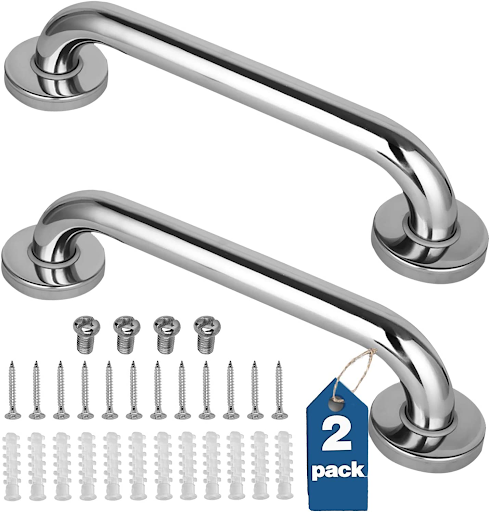
It might be annoying, but don’t attempt to shortcut the install with magnets or suction cups: always screw bars in with a power screwdriver.
3. Toilet frames
Much like grab bars, toilet safety frames are another integral way to help out those with issues moving from seated positions to standing ones. Simply place the frame underneath the toilet seat and adjust the width as required. The one pictured below can support up to 300lbs.

It’s important that caregivers regularly wipe down the surfaces of the frame (at least once a week), as they can accumulate bacteria quite easily.
4. Raised toilet seats
If balance and mobility isn’t so much of an issue, a grab bar might simply be attached to the wall adjacent to the toilet for adequate assistance in getting up.

Still, some toilets, especially older models, can be worryingly low to the ground, and for someone tall, this can prove hazardous. Raise the toilet seat up by several inches with a dedicated seat add-on. It’ll make getting up and down a lot easier.
5. Wet wipes
When it comes to medical supplies for seniors, the one caregivers will find themselves reaching for the most might actually be wet wipes. Useful for pretty much everything, they will quickly become a tool of choice.
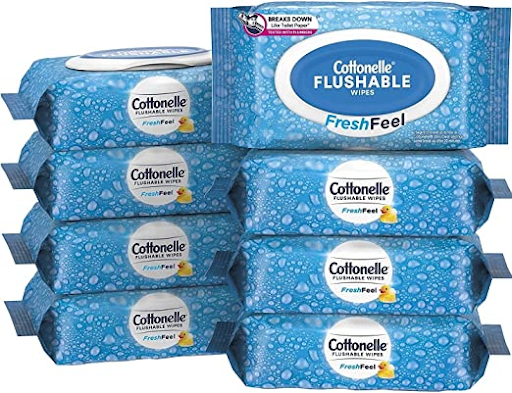
Flushable wipes can be used by seniors and carers to stay on top of hygiene needs. Choose ones made from plant-based materials to help protect the planet as much as possible.
Kitchen Assist Devices for Elderly People
Like the bathroom, the kitchen can be a pretty hazardous environment for anyone struggling with mobility restrictions, let alone elderly folks. Thankfully, there’s a heap of innovative products for elderly care that help to make kitchens safer. Check out five of the best below.
1. Easy pour kettle
Ever burnt a hand on a boiling kettle? If the answer’s yes, then no explanation of why a safety kettle is a great idea is needed.
Just catching a hand on the steam can be enough to scar the skin for life, so for those that struggle with shakes caused by Parkinson’s disease or other health conditions, picking up and using a kettle can be extremely dangerous.

Easy pour/safety kettles avoid the need to pick it up. Use the handle to simply tilt the kettle on its axis (see the rather fabulous looking option below).
2. Automatic can opener
Cans are sharp and can easily cause serious cuts when not paying close attention. Not to mention, why bother with the physical exertion?

Turning cans by hand is so… last century. Automatic can openers are, these days, rather affordable, and usually cater to a number of different utility needs in one device. Oddly, the one below, has a knife sharpener on the back. Pretty handy!
3. Slow cooker
Although easily overlooked, slow cookers are a great way for caregivers to encourage elderly folks who have become a little timid about cooking to explore their culinary skills once again.
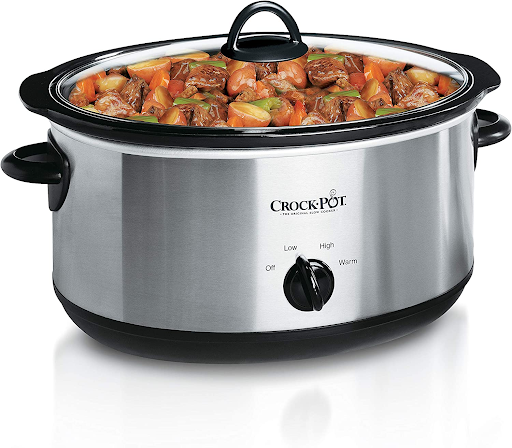
Complicated cooking isn’t appropriate for people uneasy on their feet or struggling with gradual cognitive decline, as is the case for dementia patients. Slow cookers involve minimal prep and require essentially zero need for cooking coordination. They can be safely left alone to prepare tasty food all day long.
4. Trolley
Having an extra space to put things while moving about the kitchen and the house at large is super handy when struggling with mobility, memory, and physical strength.

Trolleys are versatile and can be used for a multitude of things—they can be used to cart in meals, carry medications, drinks, and other lightweight objects.
5. Chopping board with guards
For able-bodied folks, accidentally sending a tomato flying off the chopping board when preparing food isn’t a big deal (though it is annoying). For others, it can be a major nuisance and a regular occurrence.

Chopping boards with guards prevent foods from falling off, and make it much easier to keep fruits and vegetables steady. Some also come with nails to stick foods into. Though they might look strange, they’re ideal for people with Parkinson’s and those with the function of one arm or hand.
Bedroom Products for Older People
Of all the rooms in the home, a bedroom should be the most comfortable. It’s a place where its owner should feel completely relaxed and at ease. With that in mind, check out these products for seniors that increase the comfort and safety of bedrooms.
1. Support rails
Going from a standing position to lying down flat and vice versa can be a complicated, painful process for people with diminished mobility and strength. A bed rail is a fantastic way to greatly improve the process and make it less dreaded.
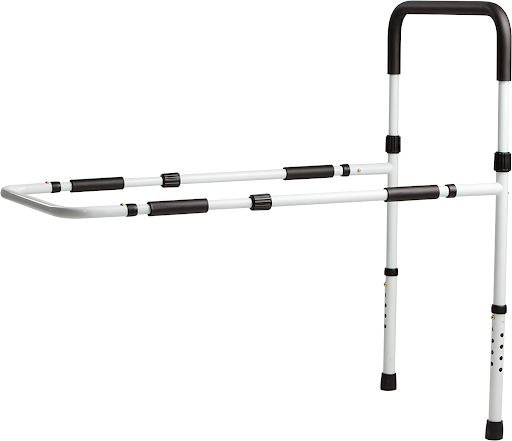
Unlike a bed cot, the rail simply attaches to the side of the bed underneath the mattress, and doesn’t cover the entire length of the bed. It can be reassuring to have for people that are unsteady on their feet.
2. Cot sides
Cot sides can be actually thought of as an essential medical supply for seniors with late stage dementia or other disorders that may create potentially dangerous movement in bed, like fits, sleep apnea, or chronic night terrors.

Unlike a bed rail, cot sides are railing that extends along the length of the bed. That makes them useful for getting in and out of bed, but also for preventing elderly people from falling out and injuring themselves.
Some beds, like those made for hospitals and healthcare facilities, are available with built-in guards, but it’s also possible to buy and add them to existing beds.
3. Bed tray
Much like trolleys in the kitchen, bed trays are actually among the most useful of senior medical supplies in the bedroom, simply owing to how much can be done with them.
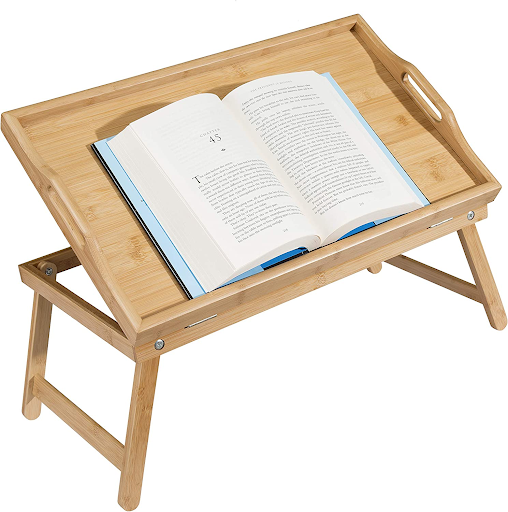
If the person being cared for is bedridden, a bed tray is necessary in order to feed them. Some also tilt, meaning they can serve leisurely functions, like book reading and laptop use, in addition to practical uses.
4. Mattress toppers
Mattress toppers might not immediately be thought of as products for older people specifically, but they are usually needed to make beds safer and more appropriate.
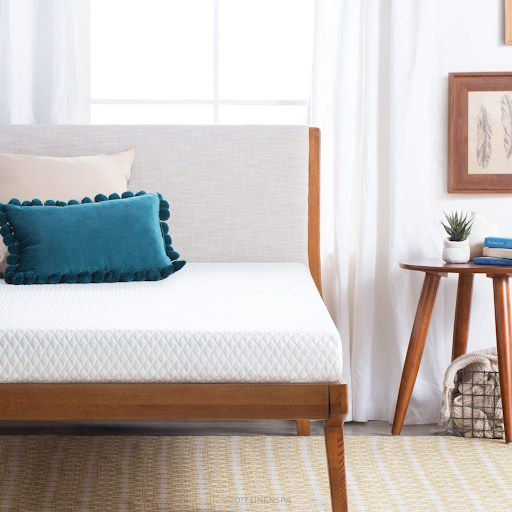
Without a large mattress topper, most beds don’t extend far enough off the floor to allow people with limited mobility to safely descend and lie flat. Likewise, getting up is harder if the surface is too close to the floor. Add cot sides/guards if falling from the increased height is a concern.
5. Mattress elevator base
Most commonly seen in hospital beds, mattress elevators make beds movable through remote controls. They can be used to prop the mattress into different angles, to support back, neck, and leg comfort.
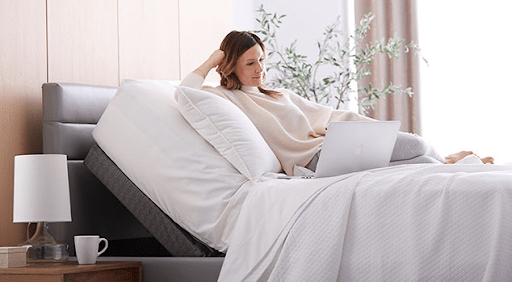
They make beds extremely comfortable, which is key for those that are bedridden. They can also be used to aid elderly people getting up off the bed less pain and instability. Expect a hefty price tag.
Miscellaneous: Surveillance, Utility, & Medical Supplies for Elderly
1. Security Camera
Surveillance can make up for the pitfalls of part-time care, and is also necessary for monitoring people with dementia who are prone to going missing.
Devices that feature two-way audio and motion detection, like AlfredCamera, should be sought out so that the caregiver is able to monitor without constant imposition.
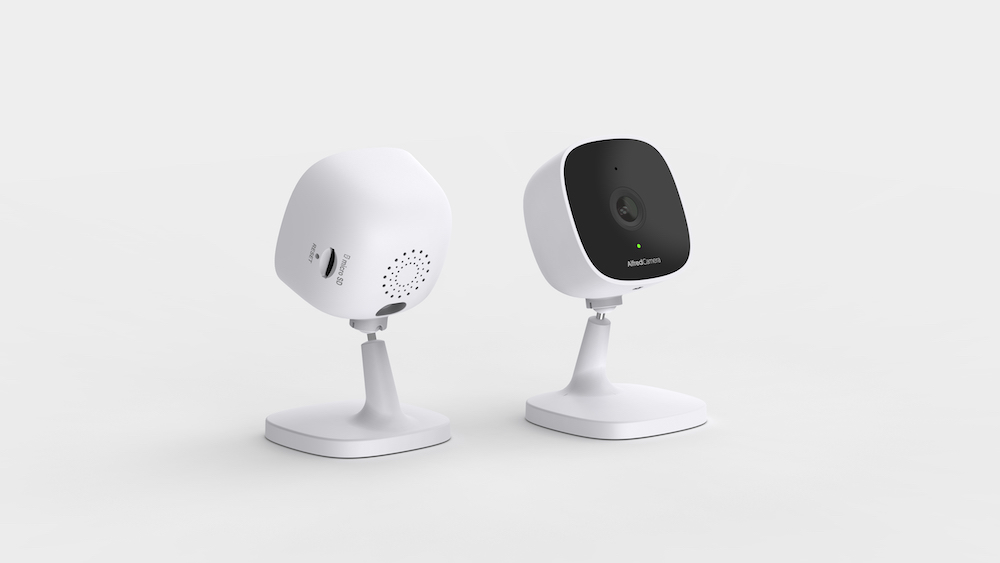
It can be used to check in when visiting in-person isn’t possible, allowing caregivers to make sure meals are being eaten and medicine is being taken at the right times. They can give a gentle reminder via two-way audio if the person has forgotten.
AlfredCam is an affordable, effective way for caregivers to stay in-the-know. Read our in-depth overview and find out what role security cameras can play in your elderly care plan.
2. Grabber tool
Inexpensive and adored by grandkids everywhere, grabber tools are nifty devices used to pick things up without having to bend down.
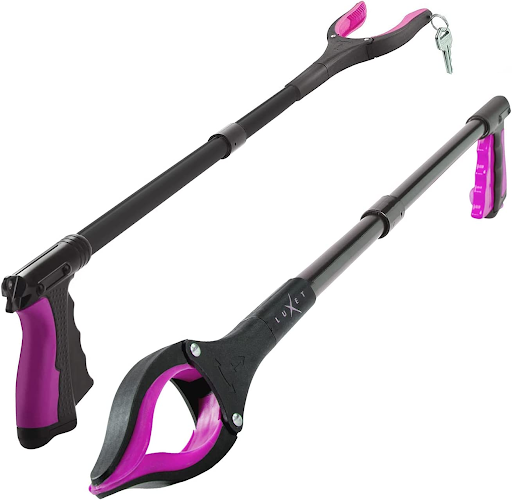
The length and slimness of the device make it usable even for hard to reach places. Most have magnets attached to the end of them, which can be used to pick up dropped keys or other metal objects.
3. Walker
Of all the assist devices for elderly people, walkers are probably the most tried and true medical supply for seniors. Walkers inside and outside the home (buy separate ones—cleaning dirt off them will get annoying, fast) can increase overall speed for getting around with limited mobility.
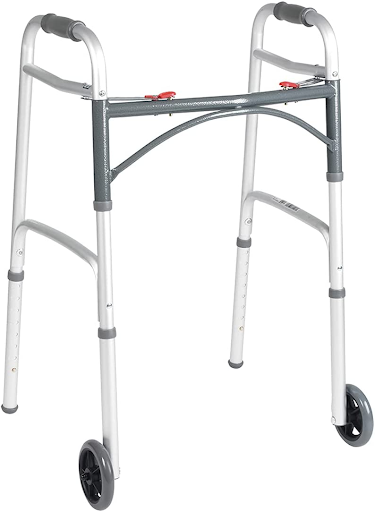
Perhaps more importantly, walkers help reestablish confidence in getting around spaces after falls and surgery.
4. Glucometer
Blood glucose (or blood sugar) levels should be monitored closely as part of the care for a number of different conditions. The most common of which is type 1 and type 2 diabetes. Hence, glucometers are the most important medical supply for seniors diagnosed with diabetes.

In an effort to enter the 21st century, a lot of glucometers nowadays offer smartphone app tracking to help patients and caregivers better stay on top of glucose levels.
5. Blood Pressure Monitor
An essential senior medical supply to have around the home is a blood pressure monitor. Blood pressure is required for monitoring a huge range of different health problems, and is quite indicative of health as a whole.
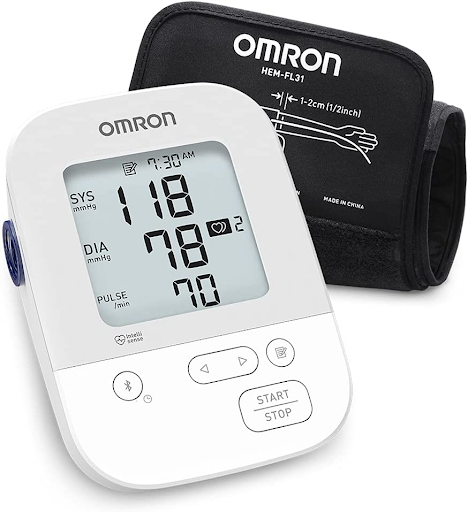
Like a glucometer, blood pressure monitors may require assistance from caregivers in order to properly attach the arm cuff. Also like glucometers, it’s common to find more expensive options with apps that store and present readings.
FAQ
What does every elderly person need?
Every elderly person receiving care needs compassion, comfort, and respect from the people around them. It can be easy for caregivers to neglect the wishes of the person receiving care when they are stressed and determined to help them to the best of their ability, but respecting the dignity of the person being cared for is just as crucial as any other element in facilitating effective care.
What to do for elderly who are bored?
- Gentle exercise, like pilates, yoga, or a walk round the block. Exercise stimulates serotonin and dopamine release.
- Video calls and phone calls. Even when physical closeness isn’t always possible, technology can bridge the gap.
- Cooking. Losing mobility can decrease confidence in the kitchen; reintroduce food simply, like with baking or cooking using a slow-cooker.
- Reading aloud. Loss of vision, or even the ability to speak and read, doesn’t mean elderly people should be deprived of their imagination. Read a book out loud if they are unable to read themselves.
- Quizzes, crosswords, and sudoku. Simple puzzles can stimulate the prefrontal cortex and keep the brain active, and it’s more fun to do them with loved ones!
What are the basic ways of caring for the elderly at home?
- Personal hygiene and grooming – helping the person being cared for get washed, dressed, brush their teeth, etc.
- Food – cooking and feeding the person being cared for.
- Mobility support – assisting the person being cared for with moving around, whether that’s inside the home or outside it.
- Socialization – being kind, compassionate, and sociable as and when required. Loneliness can be an extremely painful—and utterly unnecessary—part of growing older.
- House cleaning – if a cleaner isn’t hired, caregivers may have to help keep the home of the person clean.
Conclusion
Both tried and true and more innovative products for elderly care will make the sometimes daunting task of caregiving a lot more manageable, both in simple and big ways.
Products for seniors living at home also include basic things that will need to be bought regularly, like groceries, hygiene products, and prescription medication. Curious about how much this all costs? Read our post on the true cost of elderly care.
Elderly Care Series:
Choosing The Best Indoor Camera For Elderly Care
The True Cost of Elderly Care at Home
Getting to Grips with Levels of Elderly Care
What Are the Types of Elderly Care? The 6 Care Services You Need to Know
9 Effective Elderly Care Tips to Help Your Parents in their Golden Years
A Guide To Elderly Care For Dementia Patients
